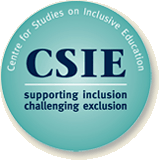
supporting inclusion, challenging exclusion
The UN Standard Rules on the Equalisation of Opportunities for Persons with Disabilities
in a nutshell
These rules set an international standard for policy-making and action regarding disabled people and education
Adoption
Adopted by the United Nations General Assembly, 48th session, resolution 48/96, annex, of 20 December 1993
Summary of Rule 6: Education
Education, summarised below, is Rule 6 in a total of 22 Rules. The Standard Rules set an international standard for policy-making and action covering disabled people.
Countries should recognise the principle of equal primary, secondary and tertiary educational opportunities for children, youth and adults with disabilities, in integrated settings. They should ensure that the education of people with disabilities is an integral part of the educational system.
There should be interpreter and other support services such as adequate accessibility; parent groups and organisations of disabled people should be involved in the education process at all levels; and in those states where education is compulsory, it should be provided to girls and boys with all kinds and levels of disabilities, including the m ost severe. Special attention should be given to very young disabled children; pre-school children with disabilities and adults with disabilities, particularly women.
In order to implement inclusive education, States should have a clearly stated policy that is understood at school and wider community levels; they should allow for a flexible curriculum as well as additions and adaptations; and provide quality materials, on-going teacher-training and support teachers. Inclusive education and community-based pr ogrammes should be seen as complementary approaches to cost-effective education and training for disabled people. Communities should develop local resources to provide this education.
Where ordinary schools cannot yet adequately make provision, special school education may be considered, but it should be aimed at preparing the student for inclusion in the mainstream. Such a separate placement should have the same aims and standards as the ordinary sector, including resources equal to those without disabilities. States should aim for gradual inclusion; in some instances, special education may be appropriate for some students, particularly deaf and deaf/blind people, though special classes and units in the mainstream should be considered. Culturally sensitive instruction will produce maximum communication skills and independence for such people.
Page last updated: Monday 22 October 2018